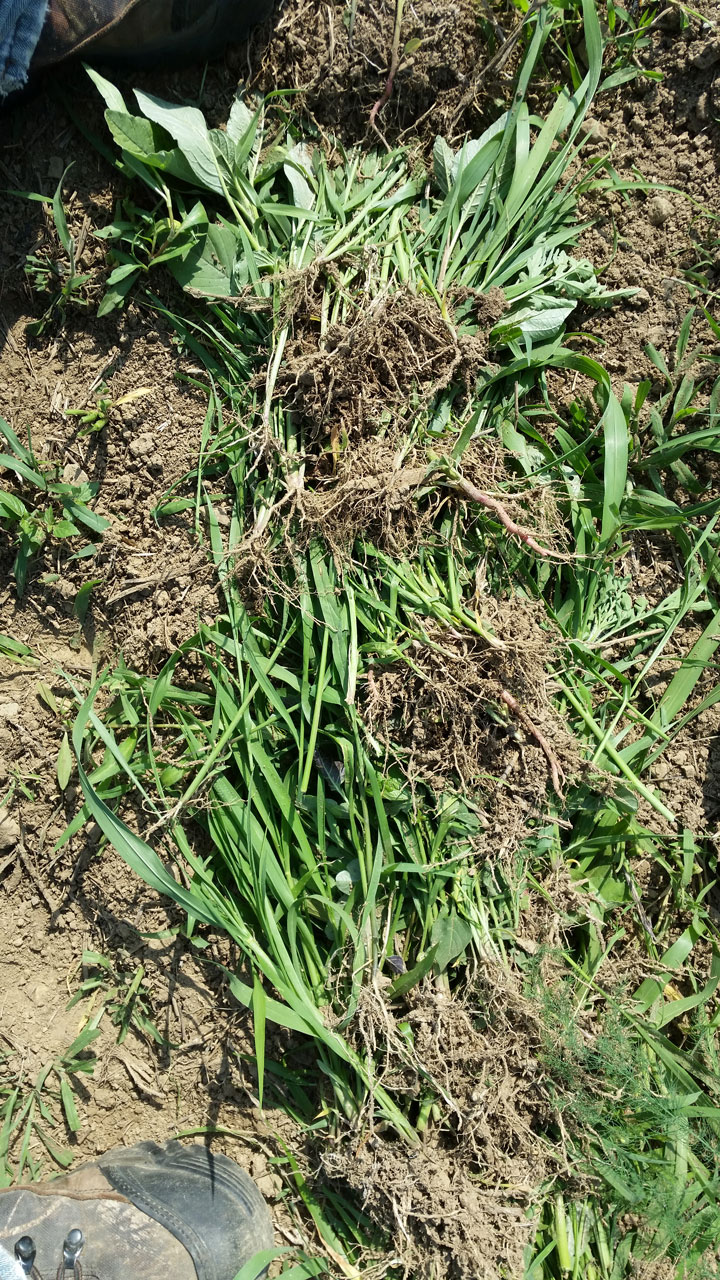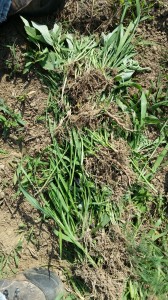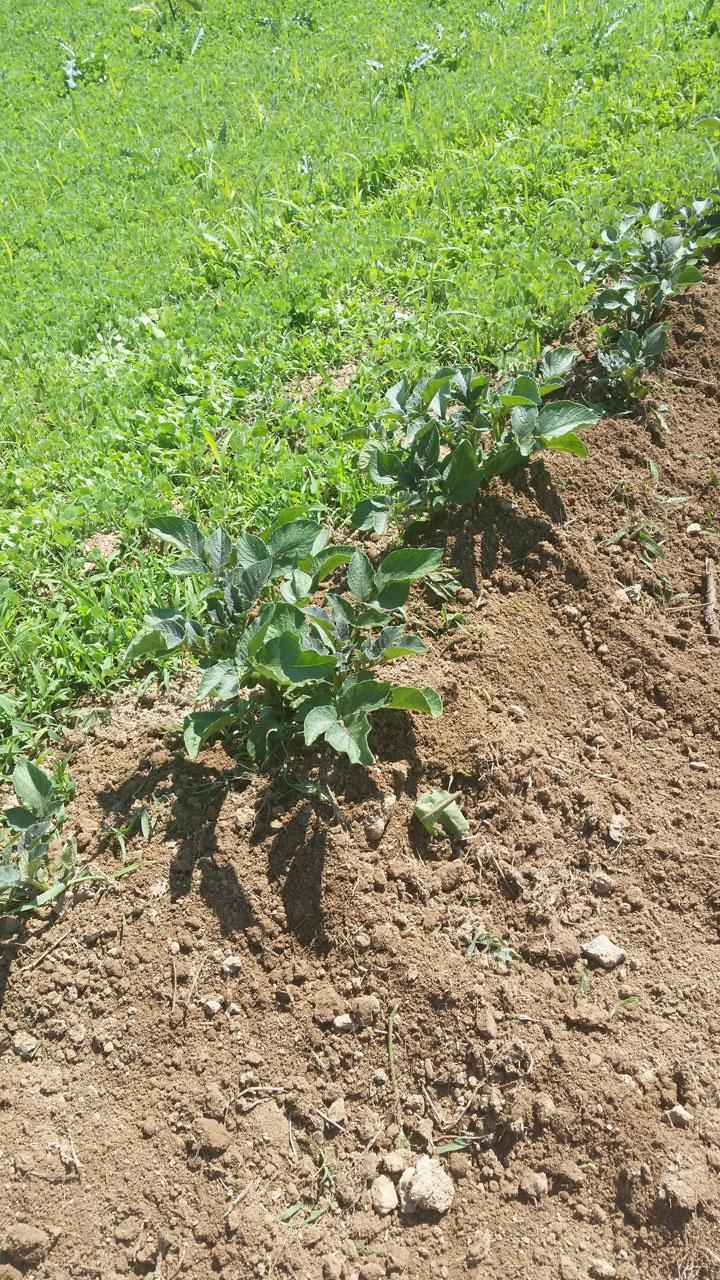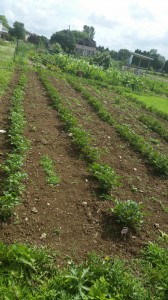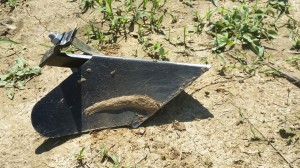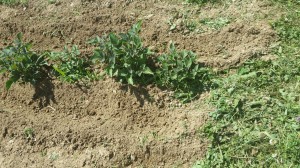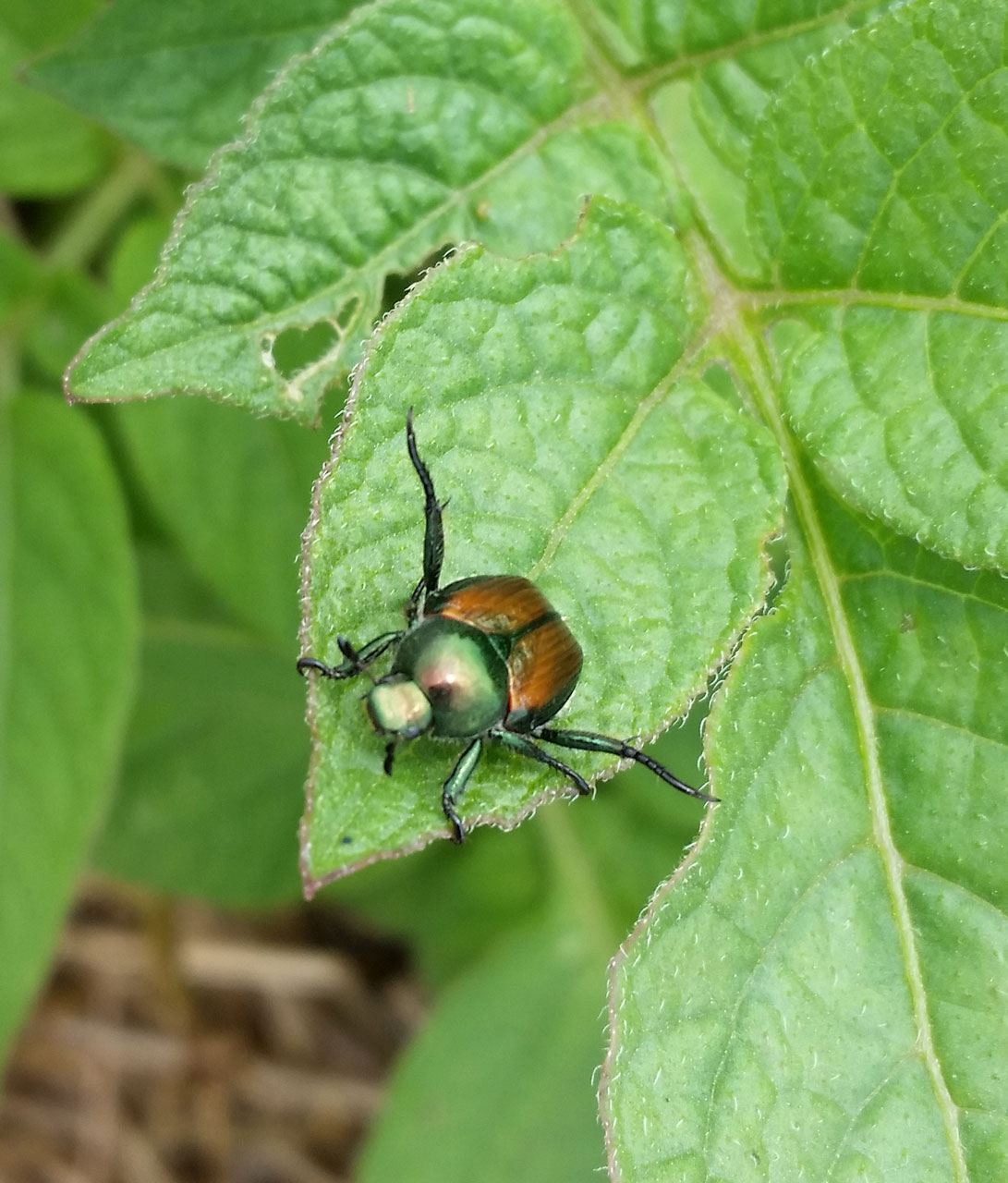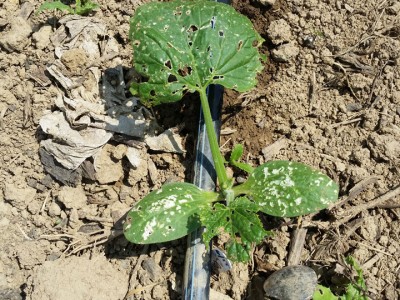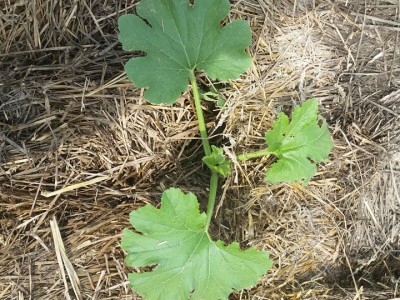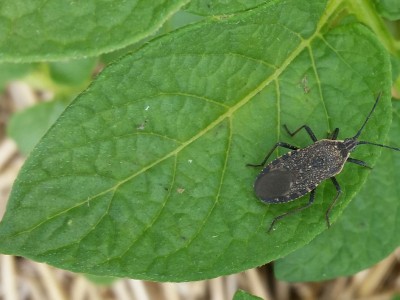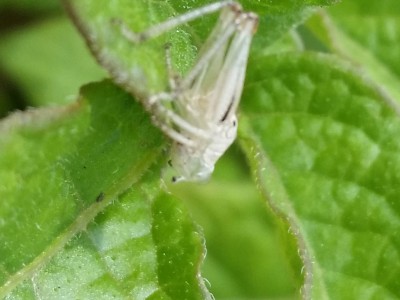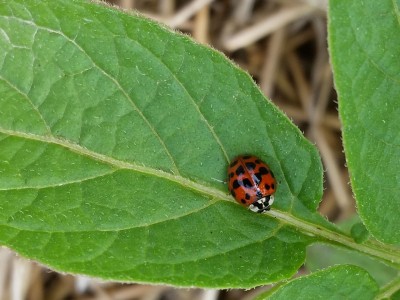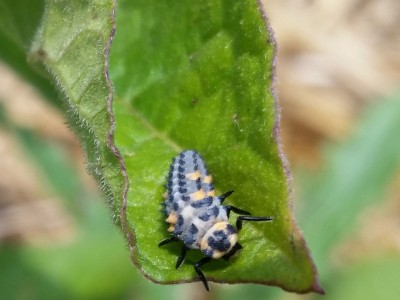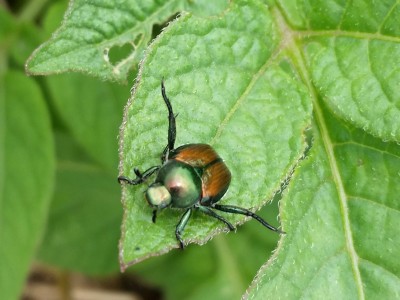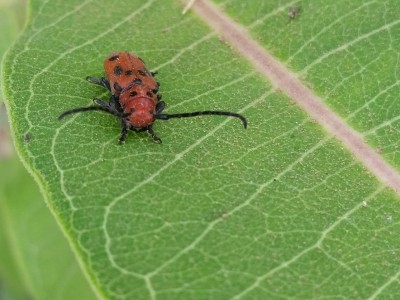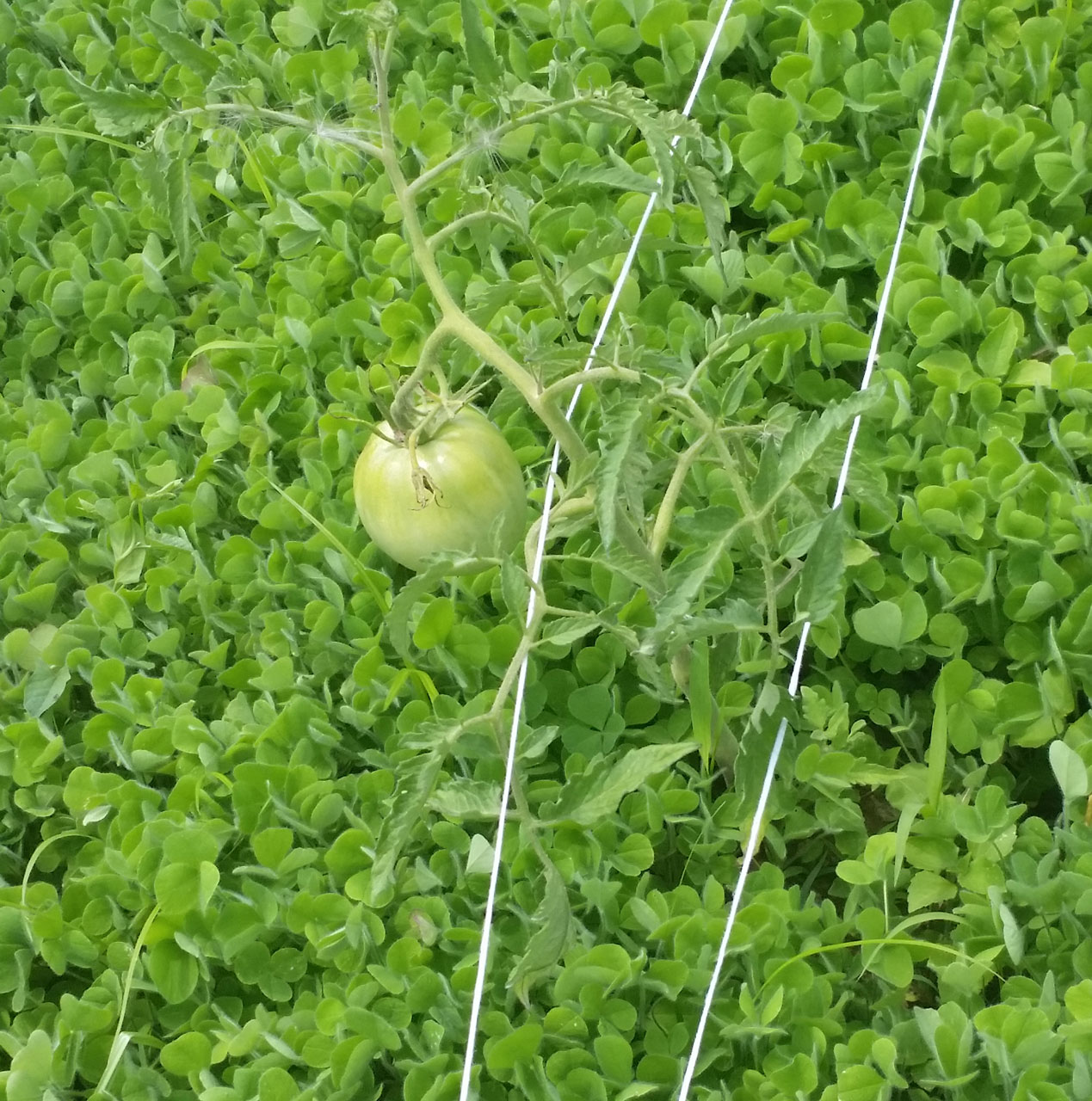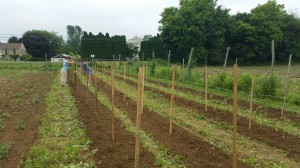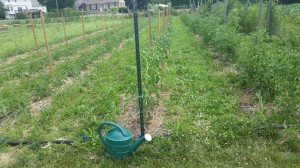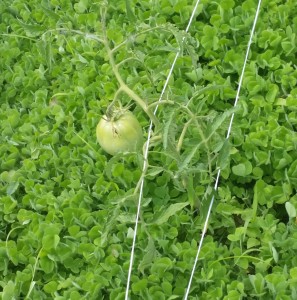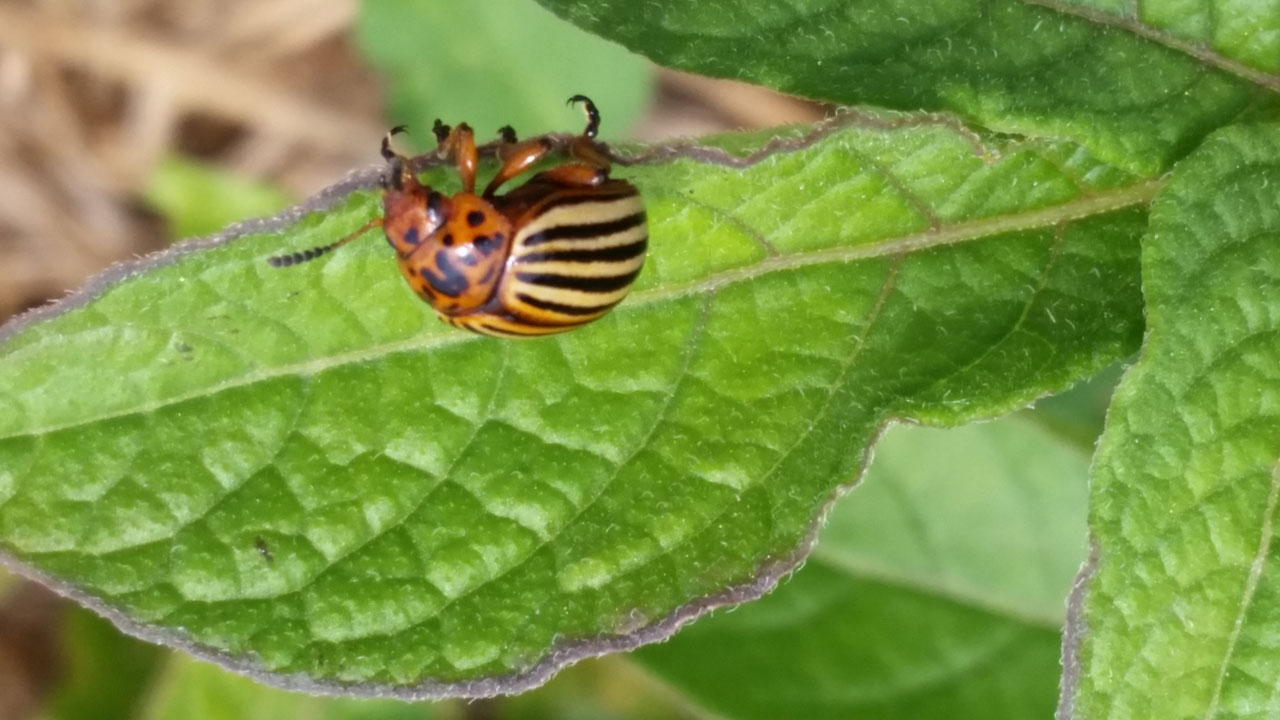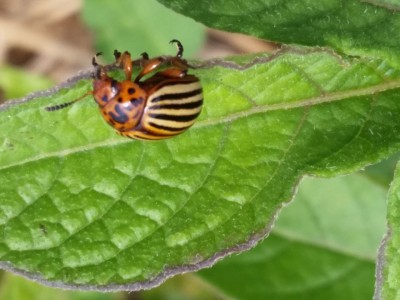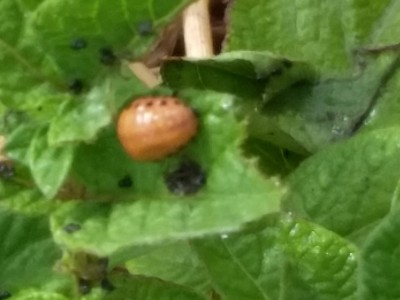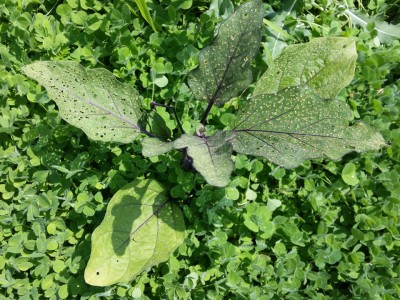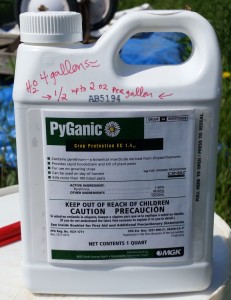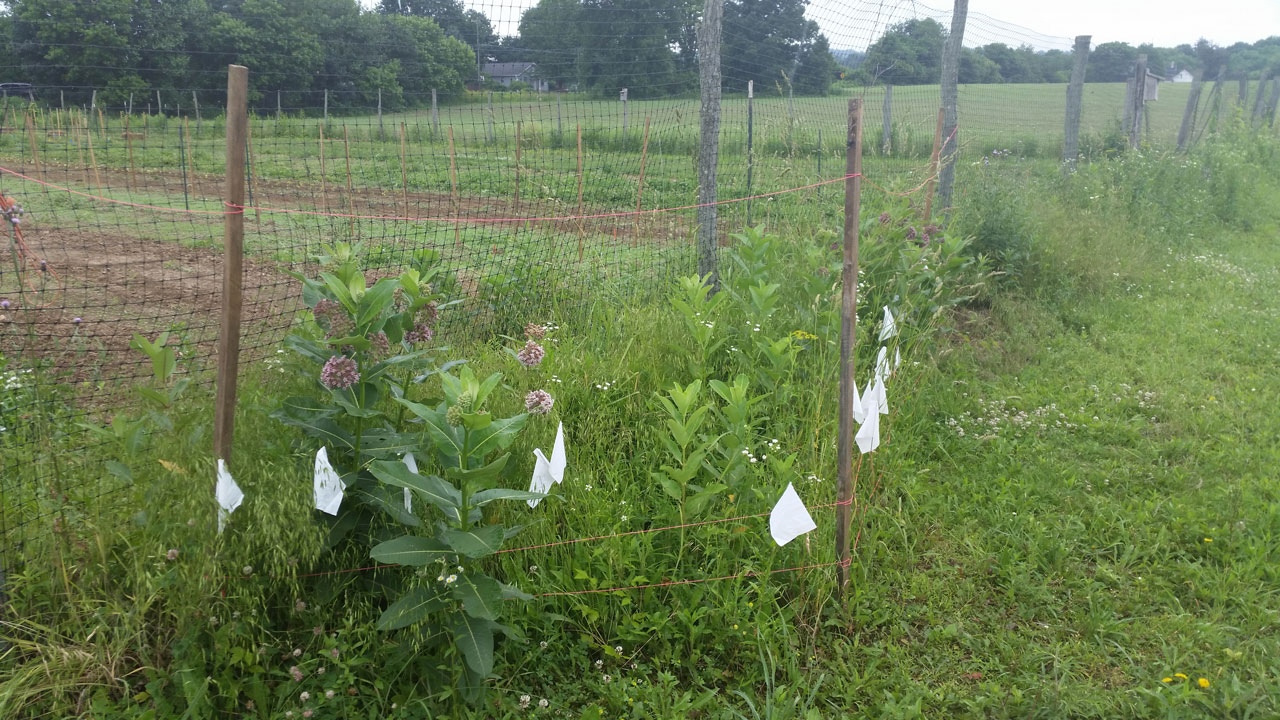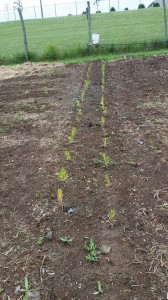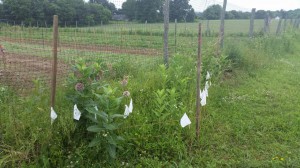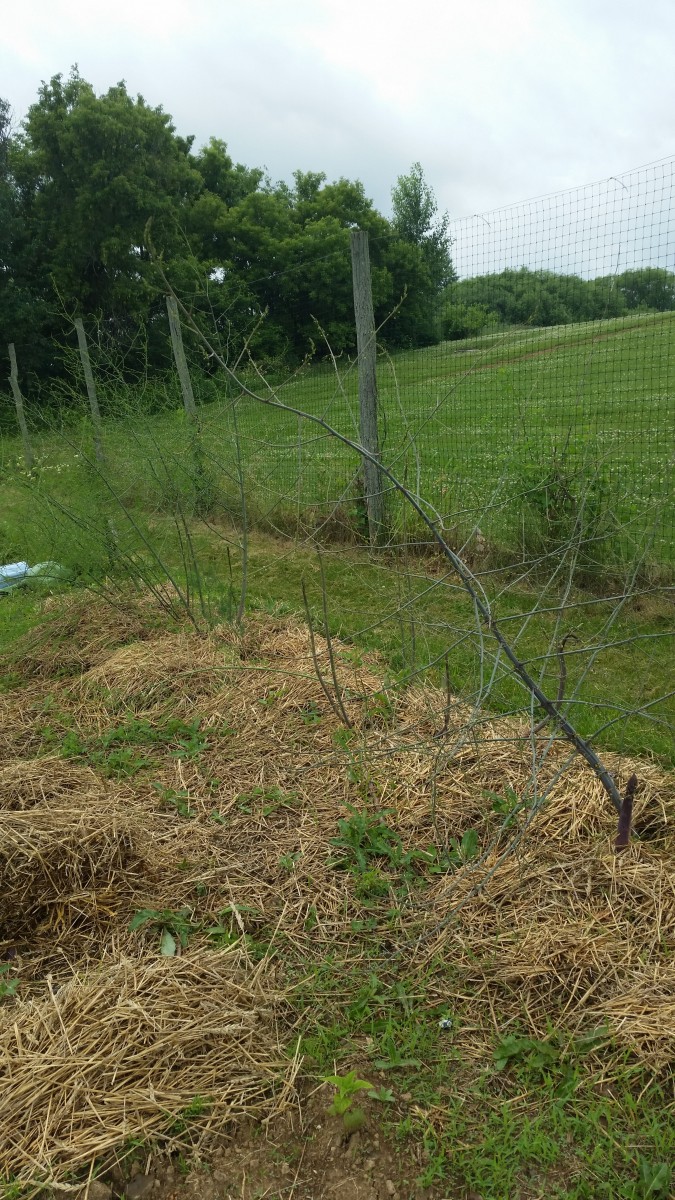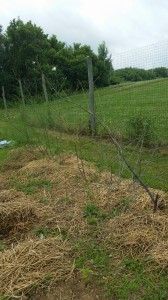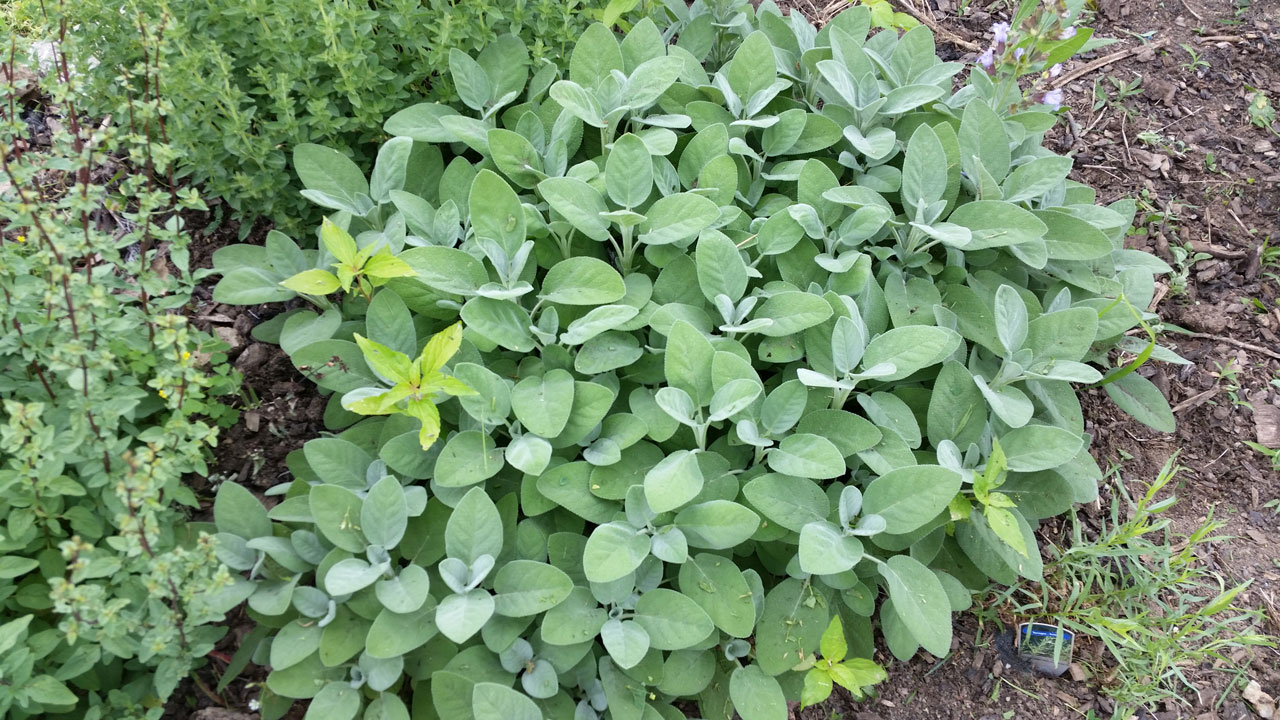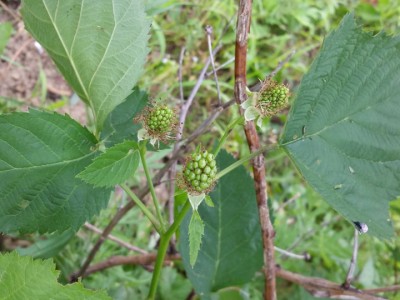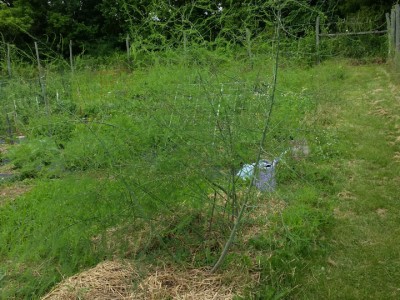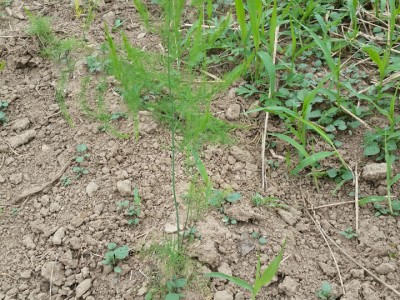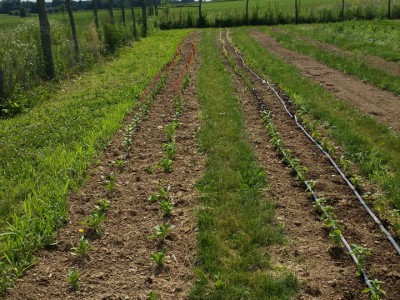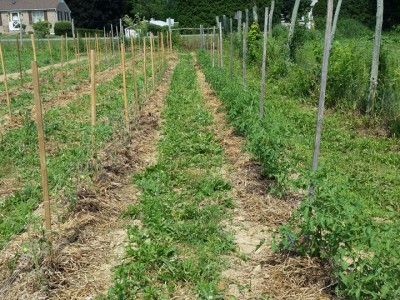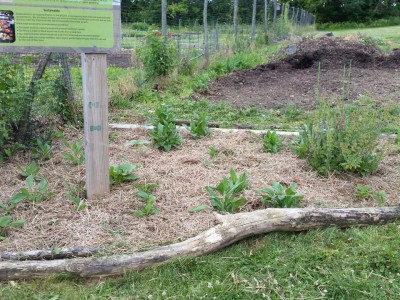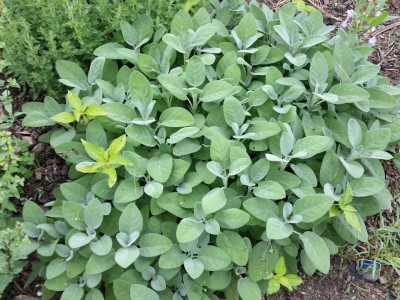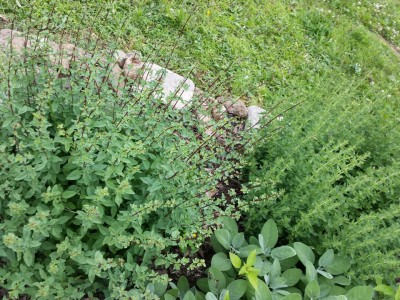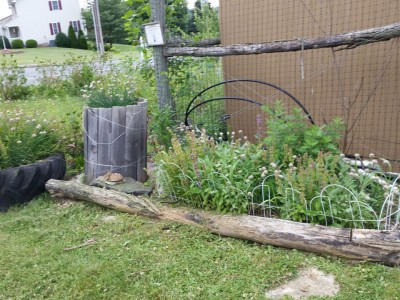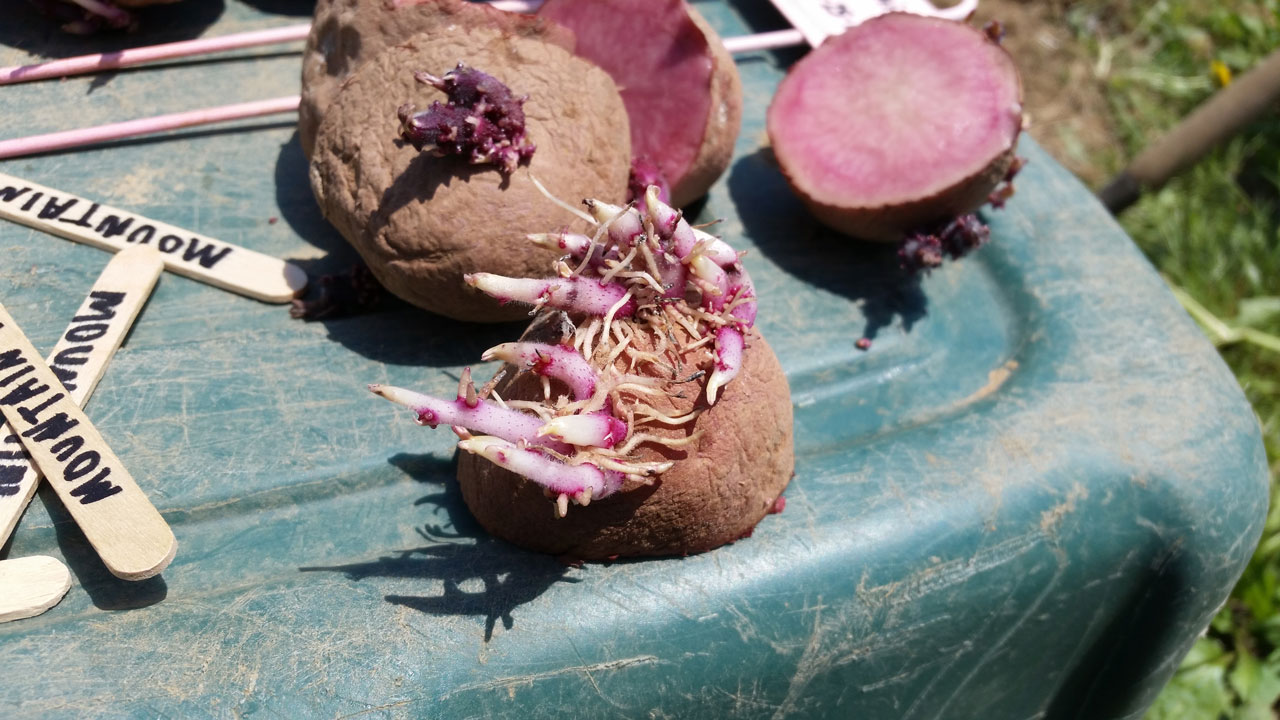Small scale farms are diverse. With a large number of plots growing different things, with certain things taking priority at certain times, you can look away from a plot for a week only to come back with weeds almost a foot high. Or, maybe you left the plot that way because you intend on using those weeds for good. How can weeds be used for good you ask? Well besides being good for compost, you can also use tall weeds as a form of mulch specifically to prevent more weed growth, which will also add more organic matter to your soil in the long run. It’s called weed thatching.
Wherever you have some bad weeds, between 1 and 2 feet tall, you can try this nifty trick. All you have to do is physically grab and pull out large handfuls of weeds and then lay them down over the pathway or row you’d like to cover. You always want the roots of one handful to be on top of the above ground portion of the previously laid handful (see the picture), and it’s best to do this on hotter, sunnier days so the sun will kill the weeds through root exposure. It’s best to lay them on pretty thick, and you may have to do this twice to completely shade out the weeds, but it’s worth it if your crop can afford the bit of weed exposure and you are sick of weeding it.
It’s easier to do on days when the soil isn’t too dry, just because it’s easier to pull the weeds then, but if you’re going to thatch weeds on purpose, make sure to keep a close eye and not let any weeds go to seed, That would be disastrous. If any weeds that you do pull are mature and might be close to seeding, don’t thatch with them or compost them, dispose of them away from where the wind could pull their seed into any plot.
Good luck with your beds gardeners!
-Joe Ingrao, Excel Scholar Summer 2014
